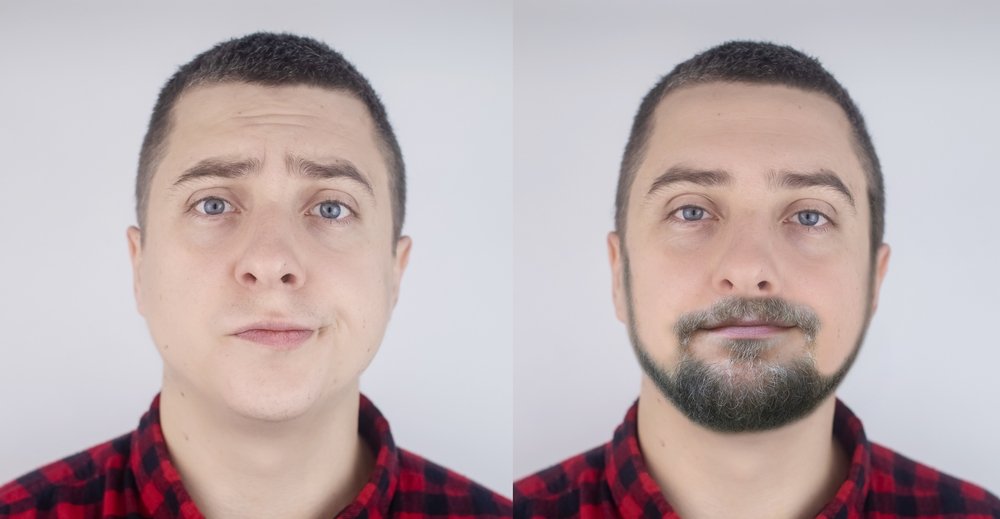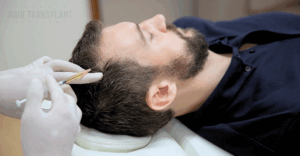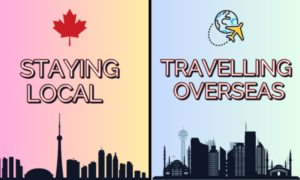Transform Your Look: Minoxidil for Mustache, Beard & Facial Hair Growth – THTS
Many people who want a fuller and thicker beard or mustache often try different methods and products. Minoxidil has become a popular choice among these. Minoxidil, also known as Rogaine, is effective in promoting hair growth, mainly on the scalp. Facial hair growth utilizing minoxidil has gained popularity as an off-label use among men seeking fuller beards.
However, its use for facial hair growth—specifically through application to the beard and mustache area for facial hair enhancement and beard enhancement—has gained increasing attention in recent years. In this article, we will dive into the world of minoxidil for beard and facial hair growth, exploring its benefits, usage, potential side effects, and more.
Introduction to Facial Hair Growth
Facial hair growth is a fascinating process shaped by a blend of genetics, hormones, and environmental influences. Each person’s ability to grow facial hair—whether a full beard, mustache, or patchy stubble—depends largely on their unique hair growth cycle. This cycle is made up of three main phases: the anagen (growth phase), catagen (transitional phase), and telogen (resting phase). During the anagen phase, hair follicles are actively producing new hair, which is crucial for achieving greater facial hair density and beard growth. The length and quality of this growth phase can vary, leading to differences in facial hair patterns and thickness from one individual to another. Beard follicles are particularly sensitive to androgens, which makes them responsive to minoxidil’s growth-promoting effects. For those seeking to stimulate hair growth and address patchy or thin areas, understanding this cycle is key. Treatments like minoxidil have become popular for their ability to promote facial hair growth, helping more people achieve their desired beard and mustache look.
Minoxidil for Beard & Mustache Growth
Minoxidil was initially formulated to address hypertension and garnered attention for its surprising secondary effect: promoting hair growth. Minoxidil was first introduced in the 1970s as an anti-hypertensive medication. This unexpected discovery prompted researchers to investigate its potential for treating diverse forms of hair loss, notably male pattern baldness. Minoxidil was later developed as a hair growth treatment, with FDA approval for androgenetic alopecia, making it widely used for scalp hair loss.
As studies progressed, anecdotal evidence suggested minoxidil’s efficacy in stimulating facial hair growth. Users experimenting with topical minoxidil for facial hair purposes observed significant improvements, especially in areas previously lacking substantial growth.
This revelation sparked widespread interest and experimentation among individuals seeking to enhance their beard and mustache density. This led to its growing popularity as a viable solution for facial hair growth augmentation. When initiating minoxidil, users may notice initial shedding followed by gradual changes in facial hair density over time.
Benefits of Minoxidil for Beard Growth
Minoxidil, while originally FDA-approved for scalp hair growth, has become a go-to solution for those looking to enhance beard growth and facial hair density. One of the standout benefits of minoxidil for beard growth is its ability to stimulate dormant hair follicles, leading to thicker facial hair and a fuller beard. When applied to the beard area, minoxidil is converted into minoxidil sulfate, which works by widening blood vessels and increasing blood flow to the hair follicles. This improved circulation nourishes the follicles, encouraging new hair growth and helping to fill in patchy areas for a more even and robust beard. Clinical evidence supports these benefits, with studies showing significant improvements in facial hair count and density among users. For anyone seeking a more uniform beard or looking to boost their facial hair, applying minoxidil can deliver noticeable, confidence-boosting results.
Beard Growth Stages & Minoxidil
Understanding the stages of beard growth is crucial for comprehending how minoxidil works in this context. The beard growth cycle consists of three phases. The hair cycle involves changes in vellus hair, which are fine, soft hairs that may initially appear as lighter colored hairs on the face. Over time, these lighter colored vellus hairs can mature into thicker, terminal facial hair as the cycle progresses.
Anagen Phase (Growth Phase):
During the anagen phase, the beard follicles are in a state of active growth, continuously producing new hair cells. Minoxidil plays a pivotal role in this phase by extending its duration. By prolonging the anagen phase, minoxidil ensures that hair follicles have more time to grow and mature, resulting in denser and fuller beard growth over time.
Catagen Phase (Transitional Phase):
The catagen phase marks a transitional period in the beard growth cycle. During this phase, the hair follicles undergo a regression, halting the production of new hair cells. While minoxidil primarily targets the anagen phase, its influence may indirectly affect the catagen phase by promoting healthier follicles and minimizing hair shedding, ensuring a smoother transition to the next growth phase.
Telogen Phase (Resting Phase):
In the telogen phase, the beard follicles enter a dormant state, ceasing active growth. Existing hairs may shed to make room for new growth during this resting period. While minoxidil’s direct impact on the telogen phase is limited, its ability to extend the anagen phase indirectly affects this stage by facilitating a more robust and consistent growth cycle.
By promoting prolonged growth, minoxidil helps maximize the potential for thicker, fuller beard growth during subsequent cycles. Telogen effluvium, a condition characterized by excessive hair shedding during the telogen phase, may also benefit from minoxidil treatment.
Who Can Use Minoxidil?
Minoxidil is generally safe for use by adult men seeking to enhance their facial hair. While primarily marketed towards individuals experiencing male pattern baldness (expressly targeting the scalp/head), it has also been embraced by those aiming to bolster their beard or mustache, and is used for various hair disorders.
However, it’s crucial to seek advice from a healthcare professional before initiating any new hair growth regimen, particularly if you have underlying health conditions or are currently taking any medications. Individuals with conditions like alopecia barbae may also explore minoxidil as a treatment option.
How to Use Minoxidil for Facial Hair Growth?
Achieving optimal results with minoxidil for facial hair growth necessitates a disciplined approach and steadfast consistency. By adhering to a systematic application routine, individuals can maximize the effectiveness of minoxidil in promoting beard and mustache growth. Foam minoxidil is an alternative to the liquid form and is often preferred for its ease of use and minimal skin irritation.
Let’s explore the step-by-step process of using minoxidil for facial hair growth to unlock its full potential. Minoxidil is typically applied once daily for facial hair growth.
Cleanse Thoroughly:
Start by washing your face with a mild facial cleanser to eliminate any dirt, oil, or impurities that could hinder minoxidil absorption. Gently pat your face dry with a clean towel to ensure it is clean and free of excess moisture before applying the product.
Determine Recommended Dosage:
Consult the product packaging or consult your healthcare provider to establish the appropriate dosage of minoxidil for stimulating facial hair growth. Dosages can differ based on the concentration of minoxidil and individual factors like hair density and skin sensitivity. The suggested dosage for facial hair growth often varies, but typically about 1.5 g (¾ of a cap) of 5% topical minoxidil foam is used per application.
Apply Minoxidil to Desired Areas:
Using a dropper or foam applicator, dispense the prescribed amount of minoxidil onto your fingertips or directly onto the areas of the beard or mustache where you wish to stimulate growth. Make sure to apply the solution evenly across the intended areas, ensuring thorough coverage of any sparse or patchy growth areas.
Massage Gently Into the Skin:
Using clean hands, softly massage the minoxidil solution into the skin using circular motions. This massage action helps to promote absorption and ensures that the minoxidil reaches the hair follicles effectively.
Allow Time for Absorption:
After applying minoxidil, give it ample time to be absorbed into the skin and hair follicles. Refrain from touching or washing the treated areas immediately after application to allow the minoxidil to work without interference.
Follow the Manufacturer’s Instructions:
It’s crucial to follow the manufacturer’s instructions carefully to achieve optimal results and minimize the risk of adverse effects. Pay attention to recommended application frequency, duration, and any additional precautions or warnings provided.
By following these steps diligently and incorporating minoxidil into your daily grooming routine, you can maximize its effectiveness in promoting facial hair growth.
Consistency is key, so stick to your prescribed regimen and be patient as you journey to a fuller, thicker beard or mustache with minoxidil.
How Long Does It Take to See a Fuller Beard?
Patience is key when embarking on a minoxidil-based beard growth journey. A patient initially may start with the liquid solution and switch to the foam formulation if side effects like dry, flaky skin occur. While individual results may vary, noticeable improvements are typically seen within a few weeks to months of consistent use. However, it’s vital to manage expectations and understand that significant growth may take several months to become apparent. Consistency and patience are critical and mandatory.
Minoxidil for Beard Results
The results of using minoxidil for beard growth can be transformative for many individuals. With regular application, minoxidil treatment has been shown to promote beard hair growth in many users, often resulting in denser, thicker facial hair, filling in patchy areas and achieving a more uniform appearance. These results can instill a newfound sense of confidence and satisfaction in one’s appearance.
Minoxidil Beard Side Effects
While generally well-tolerated, minoxidil may cause side effects in some users. Common side effects include:
- Scalp irritation
- Dryness or flaking
- Itching
- Redness
The most frequently reported side effects of topical minoxidil are allergic or contact dermatitis, pruritus, headache, and hypertrichosis.
- Scalp irritation
- Dryness or flaking
- Itching
- Redness
Most side effects are minimal mild, especially when using foam minoxidil, with mild skin dryness and hypertrichosis being typical and manageable. Unwanted hair growth in areas other than the face can also occur and should be monitored.
7.4 Allergic Dermatitis
Allergic dermatitis is a rare but possible reaction to minoxidil, presenting as redness, swelling, and severe itching at the application site. Allergic reactions, though rare, can include symptoms such as rash, difficulty breathing, or rapid heartbeat, and require immediate medical attention.
7.5 Hypertrichosis
Hypertrichosis, or excessive hair growth, can occur in areas where minoxidil is applied or if the product spreads to other parts of the skin.
Some users may experience increased body hair as a side effect, particularly on the chest, arms, or legs.
Skin Irritation:
It is a common side effect of minoxidil. Users may experience redness, burning, or stinging sensations shortly after applying minoxidil to the beard or mustache. This irritation typically subsides over time as the skin becomes accustomed to the medication.
Dryness:
Dryness may occur following minoxidil application. Users may experience flakiness or tightness in the treated area. To alleviate dryness, moisturize the skin with a gentle, non-comedogenic moisturizer.
Itching:
Itching at the application site is another common side effect of minoxidil. Users may experience mild to moderate itching shortly after applying the solution. Refrain from scratching or rubbing the treated area to avoid worsening the itching sensation.
Allergic Dermatitis:
In rare cases, individuals may develop allergic dermatitis as a reaction to minoxidil. Symptoms may include severe itching, redness, swelling, and the formation of blisters or hives. If allergic dermatitis occurs, discontinue minoxidil use immediately and seek medical attention.
Unwanted Facial Hair Growth:
While minoxidil is intended to stimulate beard and mustache growth, it may inadvertently lead to hair growth in unintended areas. Some users may notice increased hair growth on the cheeks, forehead, or other parts of the face. If unwanted facial hair growth occurs, discontinuing minoxidil use typically resolves the issue over time.
It’s essential to monitor for any signs of side effects while using minoxidil for beard growth and to discontinue use if adverse reactions occur. Consulting a healthcare professional can guide managing side effects and determining the most appropriate course of action.
Minimizing Side Effects and Safety Precautions
While minoxidil is generally safe and effective for most users, taking a few simple precautions can help minimize the risk of skin irritation and other adverse reactions. To start, consider using a lower concentration (such as 2%) and gradually increasing to a higher strength (like 5%) as your skin adjusts. Performing a patch test on a small area before applying minoxidil to your entire beard or mustache area can help identify any potential allergies or sensitivities. Following the recommended dosage and application guidelines is essential to avoid unnecessary irritation. Incorporating minoxidil into a consistent grooming routine and maintaining a healthy lifestyle—such as keeping your skin clean and moisturized—can further reduce the likelihood of side effects. By taking these steps, you can enjoy the benefits of minoxidil for facial hair growth while keeping your skin healthy and comfortable.
Combining Minoxidil with Other Treatments
For those looking to maximize facial hair growth, combining minoxidil with other proven treatments can offer enhanced results. Low-level laser therapy (LLLT) is one such option, using gentle light energy to stimulate hair follicles and promote hair growth when used alongside minoxidil. Platelet-rich plasma (PRP) hair treatment, which involves injecting concentrated platelets into areas of hair loss, may also complement minoxidil by further encouraging new hair growth. Additionally, derma rolling—a technique that uses tiny needles to boost collagen production and improve skin texture—can help create an optimal environment for facial hair growth. While these methods show promise, more research is needed to fully understand their combined effects. If you’re considering adding another treatment to your minoxidil regimen, consult with a hair restoration specialist to determine the best approach for your facial hair goals.
Research and Clinical Evidence
The effectiveness of minoxidil for facial hair growth is supported by a growing body of research and clinical evidence. While most studies have focused on scalp hair growth, recent investigations have explored its impact on beard and mustache enhancement. For example, a randomized, double-masked, placebo-controlled study published in the Journal of Dermatology found that minoxidil users experienced significant improvements in facial hair count and density compared to those using a placebo. Another compelling case involved identical twin males, where the minoxidil-treated twin achieved a greater hair count and denser facial hair than his untreated sibling after more than a year of use. Alongside these clinical findings, countless anecdotal reports highlight the positive effects of minoxidil use for facial hair growth. As research continues, both scientific studies and real-world experiences provide valuable insights into how minoxidil can help individuals achieve fuller, thicker facial hair.
Is Minoxidil Prescribed for Beard Growth by Doctors?
While minoxidil is available over the counter for the treatment of , its use for facial hair growth may not be explicitly endorsed by all healthcare professionals.
Some doctors may prescribe it off-label for this purpose, especially for individuals with particular concerns about their beard or mustache.
However, it’s vital to seek medical advice before starting any new hair growth regimen.
Conclusion
In conclusion, minoxidil offers a promising solution for individuals seeking to enhance their beard or mustache. With its ability to extend the growth phase of hair follicles, minoxidil can facilitate the development of thicker, fuller facial hair over time.
However, it’s essential to use it responsibly, following the recommended guidelines and consulting with a healthcare professional if any concerns arise. By adding minoxidil to your grooming routine, you can discover the key to a more confident and vibrant beard.






